How to get rid of whiteflies? It’s a question that plagues many gardeners, especially those who have experienced the devastation these tiny insects can inflict on their beloved plants. Whiteflies, with their delicate wings and rapid reproduction rates, can quickly transform a thriving garden into a sickly mess.
But fear not, dear reader, for this guide will equip you with the knowledge and strategies to combat these pesky pests and reclaim your garden’s vibrancy.
We’ll explore the whitefly life cycle, understand their damaging habits, and delve into effective prevention and control methods. From natural solutions to chemical interventions, we’ll cover a range of approaches, empowering you to choose the best strategy for your specific needs.
So, let’s roll up our sleeves and embark on a journey to banish whiteflies from your garden for good.
Identifying Whitefly Infestations
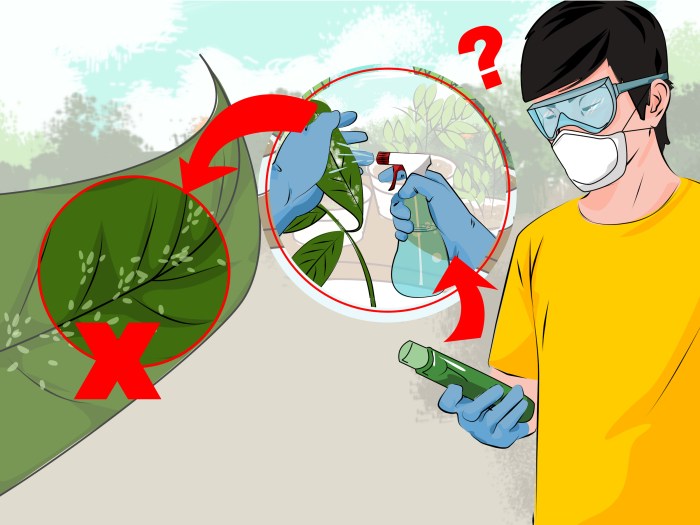
Whiteflies are tiny, sap-sucking insects that can quickly infest your plants and cause significant damage. Identifying a whitefly infestation early is crucial for preventing severe damage and protecting your plants. Here’s how to recognize the signs of a whitefly infestation and distinguish them from other garden pests.
Visual Identification of Whiteflies
Whiteflies are small, winged insects that are typically white or yellowish in color. They are often mistaken for moths or small flies. To identify whiteflies, look for the following characteristics:
- Size and Shape:Whiteflies are tiny, measuring about 1/16 inch in length. They have a delicate, moth-like appearance with two pairs of wings that are held tent-like over their bodies.
- Color:Whiteflies are typically white or yellowish in color, but some species can be darker or have a slightly greenish tint.
- Movement:Whiteflies are weak fliers and often flutter erratically when disturbed. They may also be found clinging to the undersides of leaves.
Signs of Whitefly Infestation
Whiteflies can cause significant damage to plants by feeding on their sap. Here are some common signs of a whitefly infestation:
- Yellowing or wilting leaves:Whiteflies suck sap from plants, causing leaves to yellow, wilt, and eventually drop off. This is a major symptom of whitefly infestation.
- Sticky honeydew:Whiteflies excrete a sticky substance called honeydew. This honeydew can coat the leaves and stems of plants, making them appear shiny and sticky.
- Sooty mold:Sooty mold is a black fungus that grows on honeydew. It can cover leaves and stems, making them appear dusty or dirty.
- Whitefly larvae:Look for small, oval-shaped whitefly larvae on the undersides of leaves. These larvae are usually translucent and may be difficult to see without magnification.
- Whitefly adults:You may see whitefly adults fluttering around plants or clinging to the undersides of leaves. They are often found in clusters.
Distinguishing Whiteflies from Other Pests
Whiteflies can be confused with other common garden pests, such as aphids, mealybugs, and spider mites. However, there are some key differences that can help you distinguish them:
- Aphids:Aphids are pear-shaped and have long antennae. They are typically green, brown, or black in color. Unlike whiteflies, aphids do not have wings as adults.
- Mealybugs:Mealybugs are small, oval-shaped insects that are covered in a white, waxy coating. They are typically found in clusters on stems and leaves. Mealybugs do not have wings.
- Spider mites:Spider mites are very small, eight-legged creatures that are difficult to see with the naked eye. They are often found on the undersides of leaves, where they spin fine webs. Spider mites are not white or yellowish in color like whiteflies.
Prevention Strategies
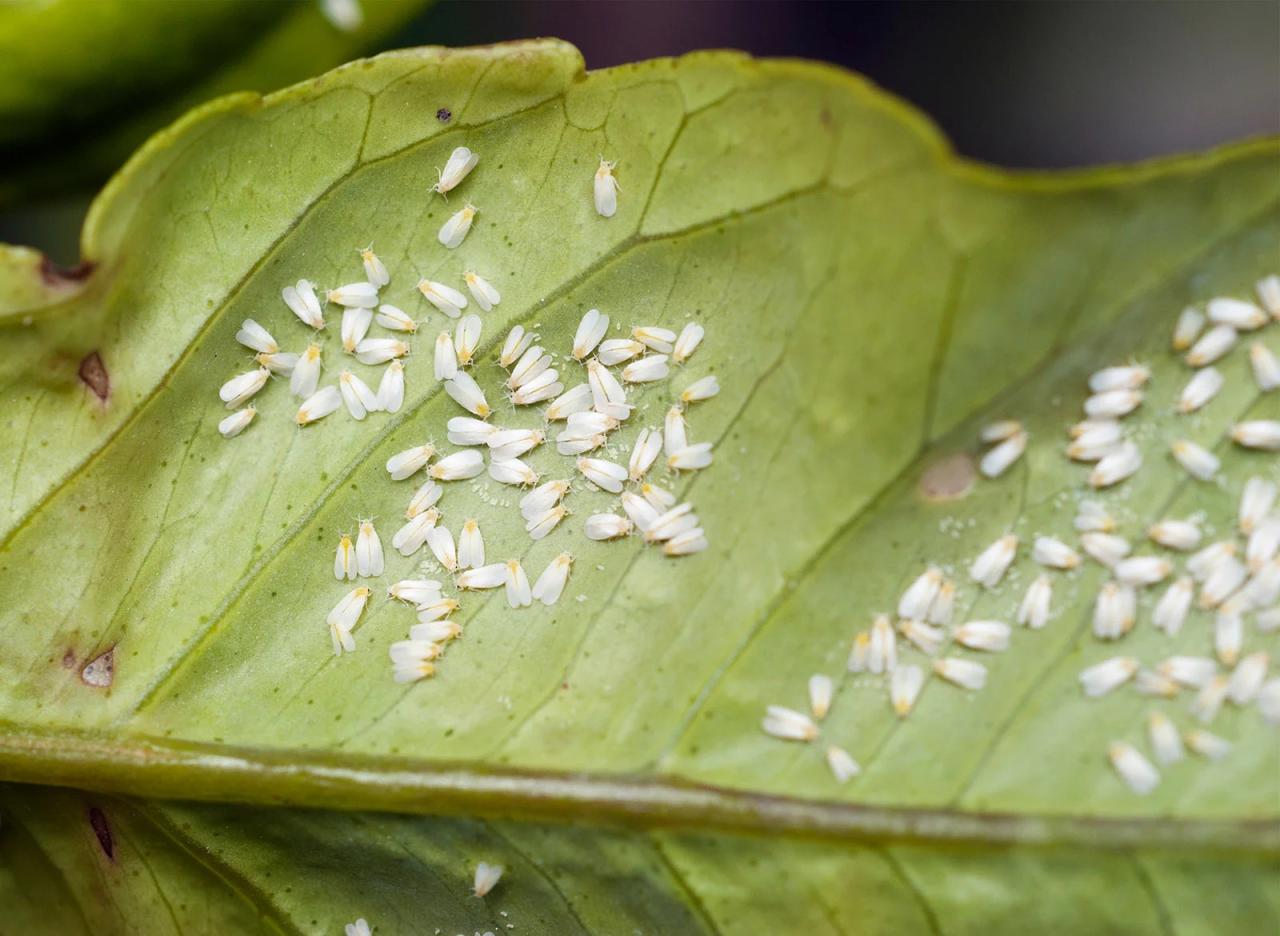
Preventing whitefly infestations is crucial to protecting your plants and ensuring their healthy growth. Proactive measures are far more effective than dealing with a full-blown infestation.
Plant Health and Hygiene, How to get rid of whiteflies
Maintaining plant health and practicing good hygiene are essential for preventing whitefly infestations. Healthy plants are more resistant to pests and diseases.
- Regularly inspect your plantsfor signs of whitefly infestation, such as whiteflies themselves, yellowing leaves, and sticky honeydew. Early detection allows for prompt action.
- Provide adequate sunlight and waterto your plants. Whiteflies thrive in dry and shady conditions.
- Avoid over-fertilizing. Excess fertilizer can weaken plants and make them more susceptible to pests.
- Remove infested plants or plant parts. This prevents the spread of whiteflies to other plants.
- Clean up debrisaround your plants, as this can provide hiding places for whiteflies.
Using Natural Repellents
Natural repellents can be effective in deterring whiteflies and reducing their populations.
- Companion planting: Certain plants repel whiteflies. For example, planting basil, garlic, or rosemary near susceptible plants can deter whiteflies.
- Neem oil: This natural oil is a potent insecticide that disrupts the life cycle of whiteflies.
- Diatomaceous earth: This fine powder is made from fossilized diatoms and is effective in killing whiteflies by dehydrating them.
- Insecticidal soap: This soap-based solution kills whiteflies on contact.
- Yellow sticky traps: These traps attract whiteflies and trap them, reducing their population.
| Preventative Measure | Description |
|---|---|
| Regular Inspection | Visually inspect plants for whiteflies, yellowing leaves, and sticky honeydew. |
| Adequate Sunlight and Water | Ensure plants receive sufficient sunlight and water, as whiteflies prefer dry and shady conditions. |
| Avoid Over-Fertilizing | Excess fertilizer weakens plants and makes them more susceptible to pests. |
| Remove Infested Plants or Parts | Remove and discard any infected plants or plant parts to prevent the spread of whiteflies. |
| Clean Up Debris | Remove debris around plants, as this can provide hiding places for whiteflies. |
| Companion Planting | Plant repellent plants like basil, garlic, or rosemary near susceptible plants. |
| Neem Oil | Apply neem oil to plants as a natural insecticide. |
| Diatomaceous Earth | Dust diatomaceous earth around plants to dehydrate whiteflies. |
| Insecticidal Soap | Spray plants with insecticidal soap to kill whiteflies on contact. |
| Yellow Sticky Traps | Use yellow sticky traps to attract and trap whiteflies. |
Natural Control Methods
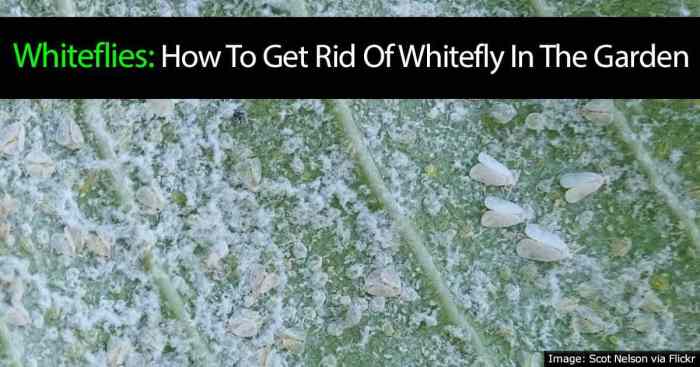
Natural control methods are environmentally friendly and effective ways to manage whitefly infestations without resorting to harsh chemicals. These methods utilize the plant’s natural defenses and introduce beneficial insects to help control the pest population.
Comparing Natural Control Methods
Different natural control methods offer varying levels of effectiveness and convenience. The table below compares some common options:
| Method | Effectiveness | Convenience | Cost |
|---|---|---|---|
| Insecticidal Soap | Moderate | High | Low |
| Neem Oil | Moderate to High | Moderate | Moderate |
| Diatomaceous Earth | Moderate | Moderate | Low |
| Beneficial Insects | High | Low | Moderate |
| Horticultural Oil | Moderate | Moderate | Moderate |
Using Insecticidal Soap
Insecticidal soap is a readily available and effective natural control method. It works by disrupting the outer layer of the whitefly’s body, leading to dehydration and death. The soap should be applied directly to the plants, ensuring that all surfaces are covered.
It’s crucial to use insecticidal soap on a calm day to avoid washing it off the plants.
Introducing Beneficial Insects
Beneficial insects like ladybugs, lacewings, and parasitic wasps are natural predators of whiteflies. They can effectively control infestations by consuming whitefly eggs, larvae, and adults.
Introducing beneficial insects is a long-term solution, as they will continue to control whitefly populations for as long as they have a food source.
Chemical Control Options
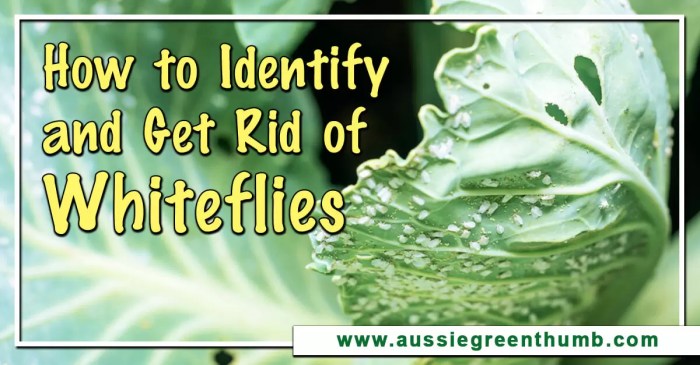
Chemical insecticides can be effective in controlling whitefly infestations, but they should be used as a last resort, after trying other methods. It is important to carefully consider the potential risks and precautions associated with using these products.
Chemical Pesticide Comparison
A comparison of different chemical pesticides for whitefly control can help you choose the best option for your situation. Here is a table comparing some commonly used insecticides:| Pesticide | Active Ingredient | Mode of Action | Advantages | Disadvantages ||—|—|—|—|—|| Imidacloprid| Imidacloprid | Neurotoxin that disrupts the nervous system | Effective against a wide range of insects, long-lasting | Can be harmful to beneficial insects, may contaminate water sources || Acetamiprid| Acetamiprid | Neurotoxin that disrupts the nervous system | Effective against whiteflies, relatively safe for beneficial insects | Can be harmful to honeybees || Malathion| Malathion | Inhibits the enzyme cholinesterase, leading to paralysis | Broad-spectrum insecticide, effective against a wide range of insects | Highly toxic to fish and aquatic life, can be harmful to beneficial insects || Pyrethrin| Pyrethrins | Neurotoxin that disrupts the nervous system | Fast-acting, effective against a wide range of insects, biodegradable | Can be harmful to beneficial insects, short-lasting |
Chemical Insecticide Application
When applying chemical insecticides, it is important to follow the instructions on the product label carefully. This will help ensure that the product is used safely and effectively. Here are some general steps to follow:
1. Identify the whitefly infestation
Before applying any pesticide, it is important to accurately identify the source of the infestation. This will help you choose the most effective product and target the right areas.
2. Choose the appropriate pesticide
Select a pesticide that is specifically labeled for whitefly control and is safe for use in your garden or home.
3. Prepare the application area
Clear any debris or obstacles that may interfere with the application.
4. Apply the pesticide according to label instructions
This may involve spraying, dusting, or using a granular formulation.
5. Wear protective gear
Always wear protective clothing, including gloves, goggles, and a mask, when applying pesticides.
6. Monitor the results
Observe the area after application to assess the effectiveness of the pesticide. Repeat the application if necessary.
Risks and Precautions
Chemical pesticides can pose risks to human health and the environment. Here are some important precautions to take:* Read and follow the label instructions:The label contains important information about the safe use, handling, and storage of the pesticide.
Wear protective gear
Always wear protective clothing, including gloves, goggles, and a mask, when handling pesticides.
Store pesticides properly
Store pesticides in their original containers, out of reach of children and pets.
Dispose of pesticides properly
Do not pour pesticides down the drain or into the ground. Follow local regulations for proper disposal.
Avoid contaminating water sources
Do not apply pesticides near water bodies, such as ponds, streams, or wells.
Consider the impact on beneficial insects
Chemical pesticides can harm beneficial insects, such as pollinators and predators. Try to use selective pesticides that target only the pest species.
Integrated Pest Management
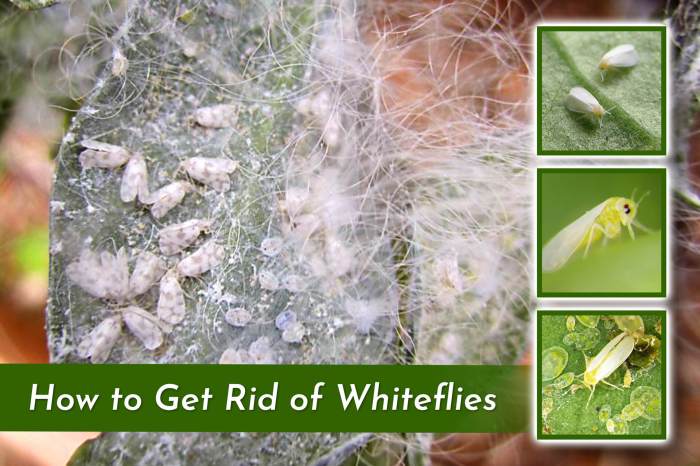
Integrated pest management (IPM) is a comprehensive approach to controlling whiteflies that focuses on preventing infestations and minimizing the use of chemical pesticides. It emphasizes a combination of strategies, including cultural practices, natural controls, and chemical treatments, to manage whitefly populations effectively.
Combining Control Methods
IPM strategies aim to integrate various control methods to create a synergistic effect. This means that the combination of different approaches is more effective than using any single method alone. Here are some examples of how to combine different control methods for whitefly management:
- Cultural Practices and Natural Controls:Planting resistant varieties of plants, maintaining good sanitation, and introducing beneficial insects like ladybugs and lacewings can reduce whitefly populations.
- Natural Controls and Chemical Treatments:Using sticky traps to monitor whitefly populations and applying insecticidal soap only when necessary can help reduce the reliance on chemical pesticides.
- Chemical Treatments and Cultural Practices:Applying chemical treatments in a targeted manner and rotating different types of insecticides can help prevent resistance development. At the same time, improving plant health through proper watering and fertilization can make plants less susceptible to whitefly infestations.
Monitoring Whitefly Populations
Regularly monitoring whitefly populations is crucial for effective IPM. This helps determine the severity of an infestation and the need for intervention.
- Visual Inspection:Carefully inspect plants for signs of whiteflies, such as whiteflies themselves, sticky honeydew, or sooty mold.
- Sticky Traps:Yellow sticky traps can be used to capture whiteflies and monitor their population levels.
- Sampling:Randomly selecting plants and examining them for whiteflies can provide a more accurate assessment of the infestation.
Monitoring whitefly populations allows for timely intervention, preventing infestations from escalating and reducing the need for harsh chemical treatments.
Last Point: How To Get Rid Of Whiteflies
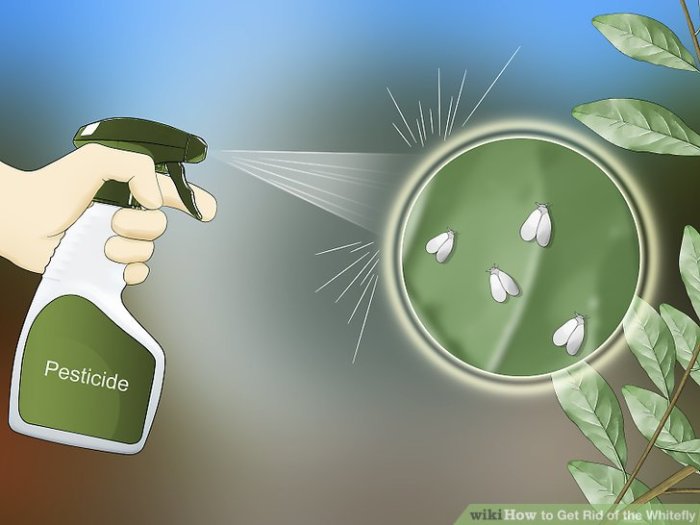
Armed with knowledge and a strategic approach, you can effectively combat whiteflies and safeguard your garden’s health. Remember, prevention is key, so implement those proactive measures to deter infestations in the first place. And if you do find yourself facing a whitefly invasion, don’t despair! By combining natural control methods with integrated pest management strategies, you can regain control and enjoy a thriving garden once more.